Damiano Mirò Serafini is a very young self-taught artist deeply fascinated by history and by the great masters of Italian artistic tradition. Just eighteen, last year he was selected among the 30 finalists in the painting section of the 12th edition of the Laguna Art Prize and last February he won the Excellence Award of Circle Art. His graphic style is inspired by the engravings of the XVI and XVII century, whose styles are updated with an extremely versatile, vibrant and synthetic pen-stroke that manages to recreate lights, volumes and atmospheres with an extreme economy of means. The characters in his drawings, whose exploits are almost always set in the past, seem to emerge from a variegated literary magma to give life to new stories in which the contemporary spectator can still be identified despite the epochal distance.
Intrigued by his early talent and by the maturity of his artistic culture, we interviewed him to get to know him better.
What is your education and when did you realize you wanted to pursue an artistic career?
I started drawing when I was very young and from that moment on I never stopped, continuing to practice independently, I believe without the real purpose of completing a training but rather with the spontaneous intent to improve myself. I never perceived this tension as something premeditated, I simply always enjoyed myself in the practice and study of art, both practical and theoretical.
Your works give a glimpse of a profound familiarity with the work of the great masters of the history of art and demonstrate a truly unique depth of understanding for such a young boy. Does the choice to inspire you to certain currents of the past be purely aesthetic or functional to a particular concept?
I am firmly convinced of the substantiality of the form. The depth of a work, I believe, should be judged on the quantity of references that it radiates within that immense basin of information that is History, tracing routes and ordering in a single organism those that would otherwise be disjointed pieces. Our present, alone, is incomplete, it necessarily needs a past, of “ancestors”, if it does not want to slip into the flatness of everyday life and oblivion. What Art does is to open behind the surface of the immediate the infinite perspective of references that our habituated eye regularly ignores. Its purpose is therefore to give a meaning and a context to our existence, to draw a path for it, to remind it of an origin and an end. All things (I hope) of immediate need for each of us, which should be enough to dispel the slothful myth of art for art.
In your drawings I also see a particular interest in the architectural styles of the past, which you analyze with extreme sharpness and then recombine into new eclectic visions. Of these settings do you find the design aspect or the scenographic one more appealing to you?
The design one, so much so that I intend to make architecture my main occupation in the future. The search for an architectural style for our times (which takes into account what has already been said above) is certainly my fixed point; the problem is not easy to solve.
What attracts your attention to the world around you instead?
What strikes me most negatively – alas – is the indisputable predominance, in contemporary society, of the material impulse on every other kind of aspiration. The call of material well-being is, in our times, the most powerful force, the engine of every activity. I hope with all my heart that the prospect of an Art as a structurally necessary tool for the spirit, rather than bizarre self-hypnotic fetishism, can some how change this unfortunate condition.
Some of your more elaborate drawings depict scenes with a large number of characters engaged in choral actions. Are these fragments of existing stories, metaphors of existential conditions or sketches of narratives yet to be invented?
In many cases these are illustrations for books I have written, in others they are possible stories or simply symbols. The category of the symbolic is especially interesting because it inserts on the usual substratum of references, common to each work, a further reference, conscious and privileged, (ie the one addressed to the object that is symbolized), which makes it a supreme condensation of meaning.
Tell us about the creative process that leads you to an illustration.
I don’t have a fixed rule. Sometimes the composition and the subjects are already very clear even before starting (but they are rare cases), others I just throw down a detail, a face, an architectural decor, and then gradually extend the design, others, may be that which happens more frequently, I have in mind a seminal idea, a theme, which serves as a guideline for the sufficiently free development of the work.
What are you working on and what are your future plans?
I am currently working on illustrations for a short poem of my own composition, Cosmographia, which intends to be a small anthropological synthesis of what man has done and thought since his birth. In this work the study of depictive stylization over the ages and in various cultures will be fundamental. I also deal with the graphic design of the literary magazine L’Orecchio di Dionisio.
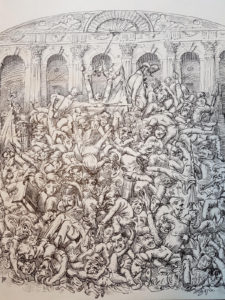 Damiano Mirò Serafini, The Fight of Philosophers. Drawing, Ink Painting, 2017
Damiano Mirò Serafini, The Fight of Philosophers. Drawing, Ink Painting, 2017
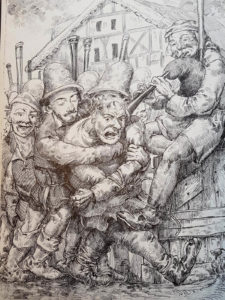 Damiano Mirò Serafini, Follia. Drawing, Ink Painting, 2018
Damiano Mirò Serafini, Follia. Drawing, Ink Painting, 2018
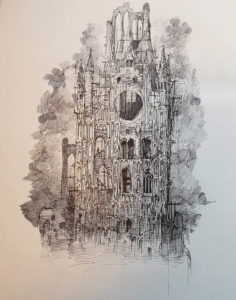 Damiani Mirò Serafini, New Gothic – Odling Builds the Tower. Drawing, Ink Painting, 2018
Damiani Mirò Serafini, New Gothic – Odling Builds the Tower. Drawing, Ink Painting, 2018

Actor and performer, he loves visual arts in all their manifestations.


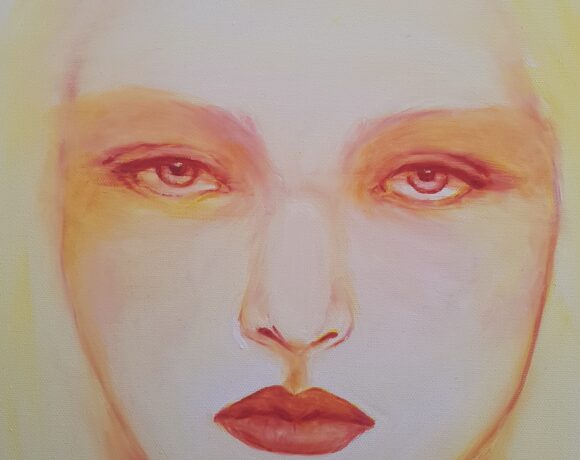
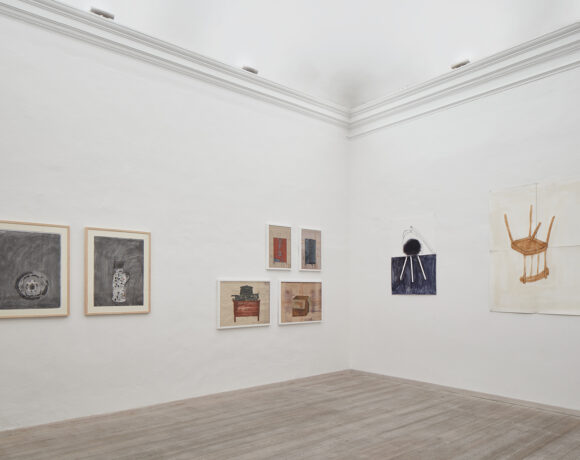
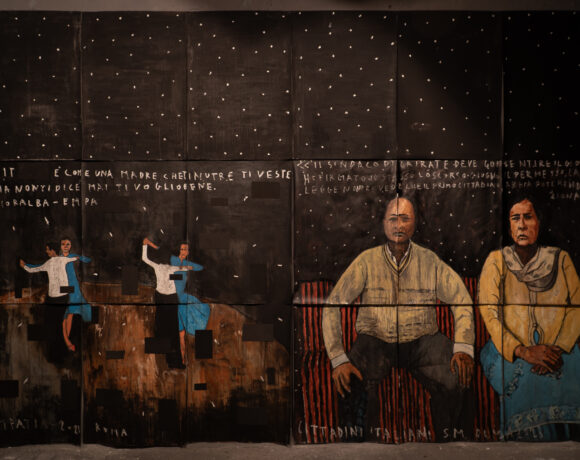

NO COMMENT